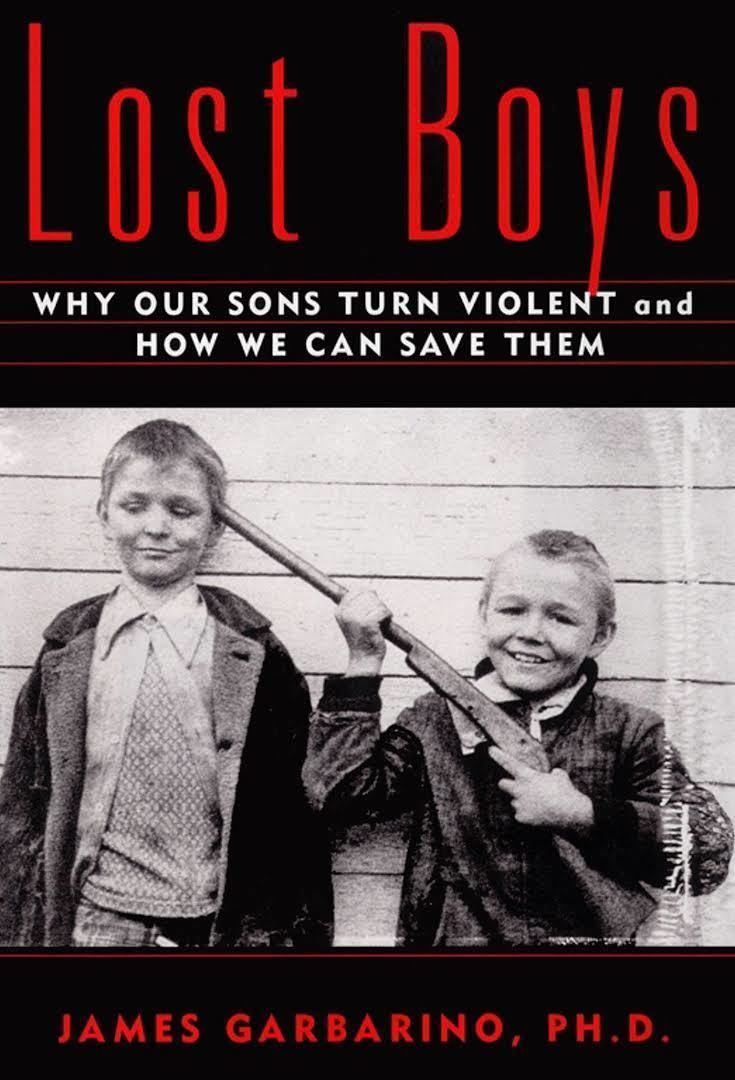7.8 /10 1 Votes7.8
Country United States Genre Psychology/Psychiatry Publication date August 15, 2000 Originally published 15 August 2000 | 3.9/5 Goodreads Language English Publisher Free Press Pages Approx. 288 | |||||||||||||||||||||||||||||||||
 | ||||||||||||||||||||||||||||||||||
Similar James Garbarino books, Family books | ||||||||||||||||||||||||||||||||||
Lost Boys: Why Our Sons Turn Violent and How We Can Save Them is a book by James Garbarino Ph.D. that details the epidemic of violent male youths in America.
Contents
Part I
The book makes use of various quantitative research, in addition to qualitative research in the form of interviews with juvenile delinquents in detention and violent boys on death row.
The book addresses biological and environmental factors that contribute to aggression in boys, which in most cases is diagnosed by mental professionals as conduct disorder or chronic mis-behaviour.
Additionally, Garbarino discusses that youths with violent backgrounds are to be understood as boys rather than as miniature adult criminals. Several passages assist parents in revising how they think about their teenaged sons. He credits the work of Anna Freud for adding to the misconception that adolescence is a disconnect from childhood.
Attachment disorder in infancy is one potential cause for violent and/or aggressive teenagers, linking the childhood with future behaviour and demeanour. Kids who experience trauma in the form of parental or caregiver abuse may depart emotionally from their physical self, called dissociation. This may cause difficulties in feeling empathy and functionally socially, which Garbarino posits makes committing violent acts more likely.
Part II
Since many youth who commit violent offences develop in physical and psychological environments that are overstimulating, effective treatment has to include a different, more soothing milieu for the youth. The book provides preventive treatment plans and interventions, in addition to a systematic approach to reforming violent offenders.
In part 2 of his book, Garbarino details a comprehensive plan for both prevention and reclamation, which include but are not limited to:
The preventative interventions make use of family systems therapy, behaviour therapy, whereas the treatments for reclamation are largely cognitive behavioural and existential.
Garbarino criticises the prison detention system that follows the boot camp model. He encourages the monastery model in its place, which has spiritual or religious leaders instead of wardens and disciplinarians. It encourages meditation and self-reflection in the adolescent inmates, expanding their understanding of how their violent acts effect both victims and society's perception of them and the community they come from.
Critical Response
"Lost Boys makes an important contribution to the literature on the causes and prevention of youth violence."
"Jim Garbarino sounds the alarm about the spread of youth violence—. Focusing on the hurt and social alienation that are at the heart of youth violence, he offers not only insight and compassion, but also steps that will lead to prevention and intervention."
"Garbarino addresses timely questions of biological and social influences of violence from an ecological perspective, and the results are very provocative."
However, as an academic, he experienced that some of the book's content "resulted in more questions than answers."
"James Garbarino presents a logical and compelling analysis of not only why boys turn violent, but also how this transformation from vulnerable young boy to violent offender, and possibly even "killer," can be interrupted."
"All in all, he has tackled an extremely difficult topic and done a very admirable job of making some sense of it and recommending ways to improve things."
